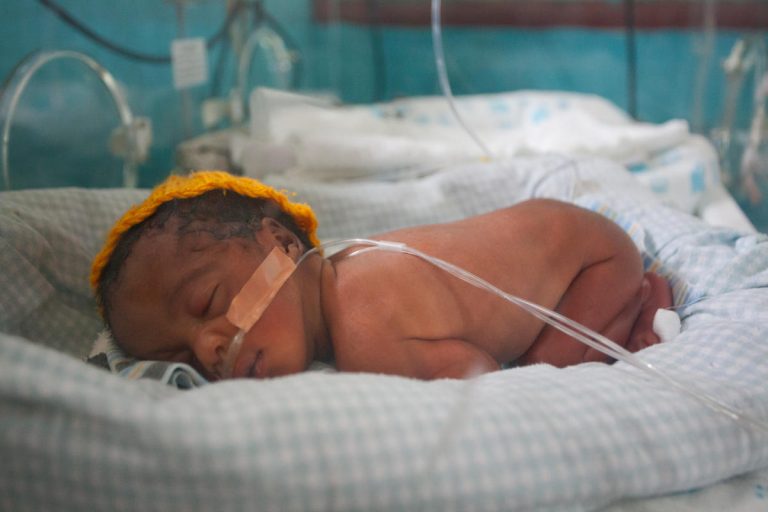By Lara Vaz and Mary Kinney
Children born too soon (preterm) or too small are at the highest risk of dying in utero, during birth and in the neonatal period, and also have increased health and development risks throughout their lifetime. Of the 2.5 million neonatal deaths in 2018, over 80% were born too small–of which two thirds are preterm and one third are small for gestational age (SGA).
Quantifying the full burden of affected children born too soon or too small or both is critical for health system response and planning. Estimates of the global, regional and national burden of preterm birth and LBW are especially needed because data for both are sparse and incomplete in many countries. In the past year, The Lancet Global Health has published two new sets of estimates – preterm birth and low birthweight (see facts about each below).
Estimates allow health system stakeholders, policies, and programmes to be better informed, enabling more precise targeting of interventions. Estimates can also be used to raise awareness of the issues as global public health priorities, and can help mobilise resources for research and maternal and child health programs. They also allow for comparison between countries or between countries and regions. Learn more about how estimates can be used at global and national levels here.
Reasons for generating global health estimates include:
- Completeness: to fill data gaps and ensure completeness of information for all countries;
- Comparability: to enable comparability of data over time and across countries;
- Currency: to produce data of immediate or current relevance;
- Cost: to generate the needed data in an inexpensive and rapid way; and
- Objectivity: to ensure independence and objectivity of the country statistics
There are some cautionary points that we would like to flag to users about the recent preterm birth and low birthweight estimates.
- Do not compare or add together the preterm birth and low birthweight estimates: the estimates are based on different models, predictors and inputs.
- Do not compare the previously published the preterm birth and low birthweight estimates as models and inputs were different.
- Do not assume that the data quality across countries was the same; there is great variation in data quality both across and also within countries. The availability of data inputs also had enormous inequities between countries.
To properly address a problem, we need to understand its magnitude. Estimates fill in the gaps in available data. We must focus on improving the quality and quantity of both LBW and PTB data, including the need to ensure we accurately count and weigh all babies (live births and stillbirths) as well as improve gestational age measurement and documentation. Achieving this practically, especially in emergency settings or weak health systems, remains a challenge. Strengthened national data systems and ensuring countries are empowered be to equal partners in global efforts to improve our understanding of health and development at global, national and local levels will be priority for improving future estimates.
Low birthweight
| Prevalence | Number | |
| LBW (2015) | 14·6% (uncertainty range 12·4–17·1) | 20·5 million (17·4–24·0 million) live births |
- Definition: “Born too small” or low birthweight (LBW) refers to newborns weighing less than 2500 g at birth. The LBW prevalence is the number of newborns weighing less than 2500 g at birth, per 100 live births.
- Burden: Globally, 20.5 million LBW infants were born in 2015 (14.6% of live births). 91% were in low- and middle-income countries, mainly southern Asia (48%) and sub-Saharan Africa (24%).
- Trend: The annual rate of reduction in LBW globally from 2000 to 2015 was 1·23%; however, reduction varied widely by prevalence level in 2000.
- Countries with estimates: 148 countries have national estimates (57 include time series data). 47 countries had no input data; the modelled national-level estimate generated is not presented for these countries.
- Global Commitments: LBW is included as a WHO core indicator for tracking health outcomes. The SDGs and Global Nutrition Plan include an ambitious goal to reduce LBW by 30% by 2025, although new trend data suggest very limited progress.
Preterm birth
| Rate | Number | |
| Preterm birth (2014) | 10·6% (uncertainty range 9·0–12·0) | 14·84 million (12·65 million–16·73 million) live births |
- Definition: “Born too soon”, or preterm, refers to newborns born at less than 37 weeks’ gestation. The preterm birth rate is the number of newborns born at less than 37 weeks’ gestation per 100 live births.
- Burden: Globally, 14·8 million infants were born preterm in 2014 (10·6% of live births). 81% of preterm births occur in Asia and sub-Saharan Africa. Approximately 15% of preterm newborns were born before 32 weeks of gestation and require special inpatient care.
- Trend: Rates of preterm birth are increasing in selected high-income and high-middle-income countries where there is data.
- Countries with estimates: 80 countries have PTB rate estimates generated from this model. For the remaining 103 countries, they only present the corresponding regional estimate.
- Global Commitments: Improved counting of preterm births, and related outcomes, is a priority of the Every Newborn Action Plan, led by UNICEF and WHO, and will be crucial to achieving SDG target 3.2
